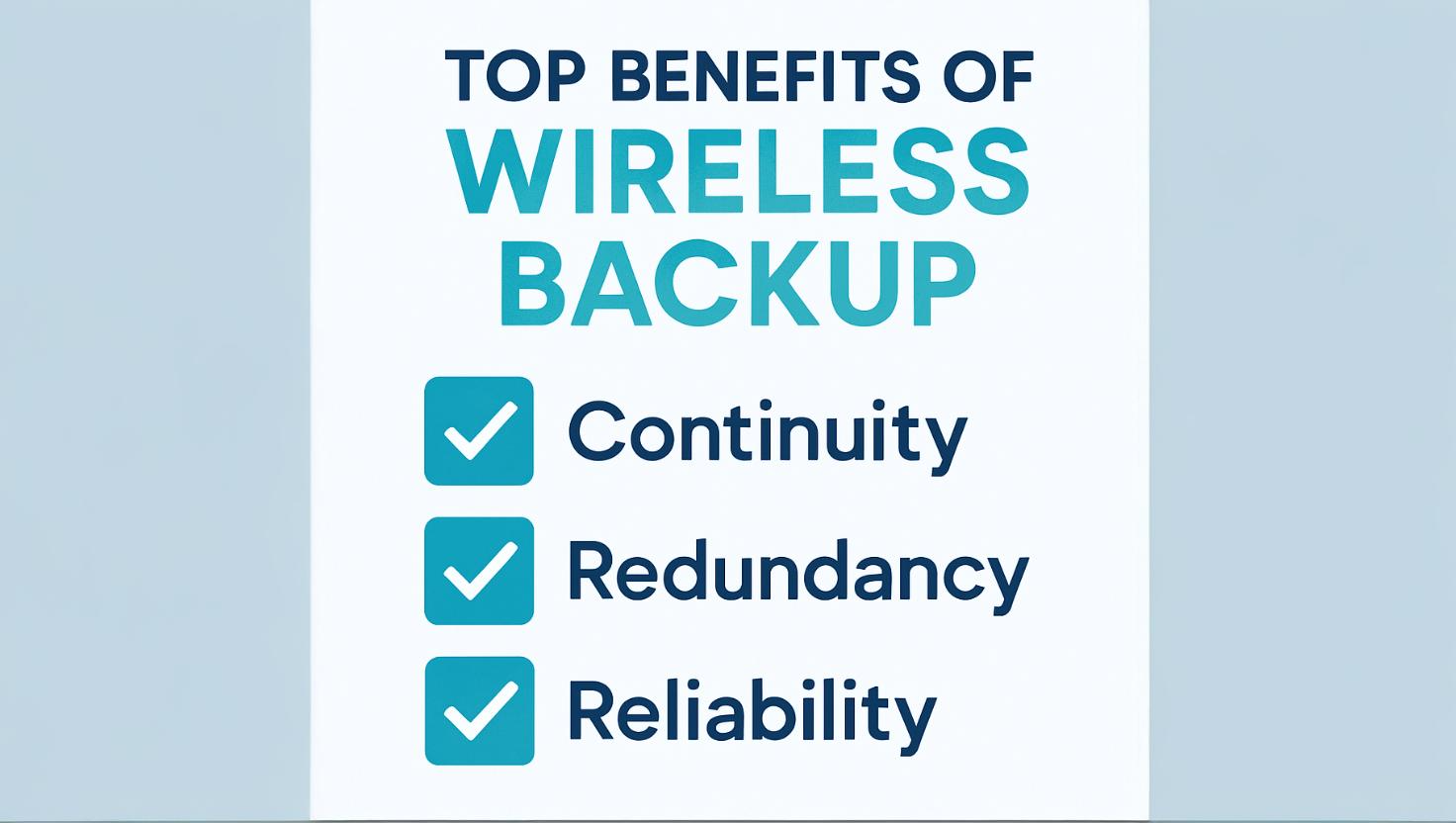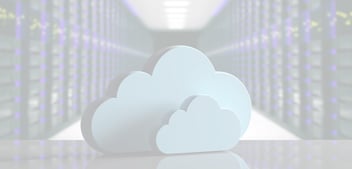Wireless Backup: Ensuring Reliable Connectivity for Your Business

When internet outages strike, the impact on your business isn’t just inconvenient—it’s costly. From dropped calls and delayed operations to unhappy customers and lost revenue, connectivity disruptions can grind your business to a halt, highlighting the importance of having the ability to maintain operations during such disruptions. That’s where wireless backup comes in.
Whether you’re an IT manager, operations lead, or small business owner, wireless backup is one of the smartest investments you can make in ensuring business continuity, IT redundancy, and overall telecom reliability.
Introduction to Business Continuity Management
Truth be told, disruptions can occur at any time, from natural disasters to cyberattacks. Business continuity management (BCM) is a holistic management process designed to identify potential threats to an organization and provide a framework for building resilience including the capability to respond to and recover from disruptive events.
The primary goal of BCM is to ensure that an organization can continue to operate and deliver its products and services, even in the face of disruptions or disasters. This is achieved through the implementation of business continuity management systems (BCMS), which provide a structured approach to identifying, assessing, and mitigating risks, as well as developing and implementing business continuity plans (BCP).
A business continuity plan is a critical component of a BCMS, outlining the procedures and protocols for responding to and recovering from disruptions. Effective business continuity management requires a top-down approach, with senior management commitment and involvement, as well as a thorough understanding of the organization’s critical business functions and processes.
Business continuity planning involves identifying potential threats, assessing their impact, and developing strategies for mitigating or responding to them. This includes developing disaster recovery plans, implementing both hardware redundancy and software redundancy, and establishing both network redundancy and data redundancy.
The benefits of business continuity management are numerous. It improves resilience, reduces risk, and enhances the organization’s reputation. Additionally, it ensures compliance with regulatory requirements and industry standards, providing peace of mind that the organization is prepared for any potential disruptions.
The Hidden Cost of Downtime
Internet downtime can cost small businesses hundreds—even thousands—of dollars per hour. It’s not just the missed emails or frozen video calls. It’s missed sales, frustrated customers, and idle employees.
A recent report states that the average cost of IT downtime is $5,600 per minute. While that figure varies by company size, even a fraction of that cost is significant for SMBs.
Conducting a business impact analysis can help identify the potential financial repercussions of downtime, allowing businesses to better prepare and mitigate these risks.
Downtime also disrupts internal workflows, damages your brand’s credibility, and lowers employee morale. For businesses with mission-critical services or customer-facing communications, even a brief outage can trigger a chain reaction of problems.
What Is Wireless Backup?
Wireless backup, also known as cellular failover, provides a secondary internet connection that automatically activates when your primary service goes down. It uses a cellular network to keep your phones, cloud systems, and business tools online—no scrambling, no lag, and no lost productivity.
Think of it as your silent protector: always on standby, ready to take over when your main connection or a critical component fails. It’s fast, seamless, and invisible to your team and customers—exactly what you want in a crisis.
At Simplicity VoIP, our wireless backup solution is designed to plug directly into your VoIP or data system, delivering instant, automatic failover with zero disruption.
Why Wireless Backup Is a Business Essential

Incorporating wireless backup into your business continuity strategy ensures that your organization is prepared for any connectivity disruptions. So, if you’re wondering whether wireless backup is worth the investment, here are three reasons it should be part of your continuity plan:
1. Business Continuity You Can Count On
A wired connection isn’t enough. Effective business continuity requires a comprehensive evaluation of your organization's operations to identify vulnerabilities and ensure continuous functionality during disruptions. Weather events, local construction, or ISP maintenance can unexpectedly knock out your internet. With wireless backup, you stay connected no matter what—minimizing disruption and maintaining business as usual.
2. Built-In IT Redundancy
Redundancy isn’t just for enterprise IT teams. SMBs need failover solutions, too. Wireless backup acts as a cost-effective form of IT redundancy, improving actual system performance by ensuring your phones, CRM, or POS systems stay online when you need them most.
3. Enhanced Telecom Reliability
Your phones are your lifeline. Missed calls = missed opportunities. Wireless backup ensures your VoIP systems stay up and running—even during an outage—thereby enhancing fault tolerance and setting your business apart from competitors. This level of telecom reliability reassures your clients.
Industries That Benefit Most from Wireless Backup

Wireless backup is a powerful safeguard for any business—but especially those in:
-
Healthcare: Ensure continuous access to telehealth, scheduling, and patient records.
-
Retail: Keep your POS and online ordering systems running smoothly.
-
Legal and Financial: Avoid downtime that delays client service or time-sensitive transactions.
-
Professional Services: Stay connected with clients, even during service interruptions.
In these industries, maintaining access to critical components like telehealth systems, POS systems, and client service platforms is essential for continuous operation.
Disaster Recovery
Disaster recovery is a critical component of business continuity management, focusing on the restoration of IT systems and infrastructure after a disaster or disruption. A disaster recovery plan (DRP) outlines the procedures and protocols for recovering IT systems and data, and should be developed in conjunction with the business continuity plan.
The goal of disaster recovery is to minimize downtime and data loss, and to restore normal business operations as quickly as possible. Disaster recovery planning involves identifying critical IT systems and data, assessing the risks and impacts of disruptions, and developing strategies for recovery. This includes implementing backup and restore procedures, establishing a disaster recovery site, and developing a plan for restoring critical business functions.
Effective disaster recovery requires regular testing and exercise to ensure the plan is effective and that personnel are trained and prepared. Disaster recovery is an essential component of business continuity, as it enables organizations to recover from disruptions and maintain their operations and services.
The use of cloud-based solutions, such as Microsoft Azure, can provide a cost-effective and scalable approach to disaster recovery, with built-in redundancy and failover capabilities. These solutions offer a flexible and efficient way to ensure that critical IT systems and data are protected and can be quickly restored in the event of a disaster.
Cloud-Based Solutions
Cloud-based solutions are increasingly being adopted by organizations as a key component of their business continuity and disaster recovery strategies. Cloud services, such as infrastructure as a service (IaaS), platform as a service (PaaS), and software as a service (SaaS), provide a flexible and scalable approach to IT, with built-in redundancy and failover capabilities.
Cloud-based solutions can provide a cost-effective and efficient approach to disaster recovery, with reduced capital and operational expenses. These solutions also offer enhanced security and compliance, with built-in security controls and auditing capabilities. However, cloud-based solutions also introduce new risks and challenges, such as data sovereignty and security, and dependence on internet connectivity.
Effective use of cloud-based solutions requires careful planning and management, including risk analysis and mitigation, and regular testing and exercise. Cloud-based solutions offer a range of benefits, including improved flexibility and scalability, enhanced security and compliance, and reduced costs.
The use of cloud-based solutions is becoming increasingly common in the telecom industry, with many organizations adopting cloud-based services to support their business continuity and disaster recovery strategies. By leveraging the power of the cloud, businesses can ensure that their critical IT systems and data are protected and can be quickly restored in the event of a disruption.
Preventing Data Loss
Preventing data loss is a critical component of business continuity and disaster recovery, as data is a key asset for most organizations. Data loss can occur due to a range of factors, including hardware failure, software corruption, and human error. Effective data backup and restore procedures are essential for preventing data loss and should be developed in conjunction with the business continuity plan.
This includes implementing regular backups, using a redundant array of independent disks (RAID) and other fault-tolerant storage solutions, and establishing a data recovery plan. Data redundancy is also critical, with multiple copies of data stored in different locations, to ensure that data can be recovered in the event of a disaster or disruption.
The use of error correction and detection techniques, such as checksums and digital signatures, can also help to prevent data loss and corruption. Regular testing and exercise of data backup and restore procedures is essential, to ensure that data can be recovered quickly and effectively in the event of a disaster or disruption.
Preventing data loss requires a comprehensive approach, including risk analysis and mitigation, regular backups and testing, and effective data management and security controls. By taking these steps, organizations can protect their critical data and ensure that they can continue to operate and deliver their products and services, even in the face of disruptions.
Why Choose Simplicity VoIP?

We don’t just offer wireless backup—we make it simple.
Simplicity VoIP’s wireless backup solution is easy to deploy, easy to manage, and backed by a team who understands your business. We provide proactive monitoring and seamless integration with your existing telecom setup. Our whole team is dedicated to ensuring your business continuity, providing proactive monitoring and seamless integration with your existing telecom setup.
You don’t need to be a tech expert—we take care of the details so you can focus on running your business with confidence.
Final Thoughts: Don’t Wait Until It’s Too Late
Downtime isn’t a matter of if—it’s a matter of when. Wireless backup is a smart, proactive solution that protects your operations, your customers, and your bottom line.
Effective business continuity helps reduce downtime, protect financial investments, and strengthen overall organizational resilience.
By adding this layer of IT redundancy, you’re not just investing in technology—you’re investing in business continuity and long-term reliability.
Let Simplicity VoIP be your trusted partner in telecom resilience.




